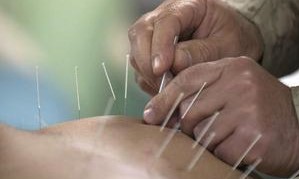

Acupuncture is a health science that has been in practice for over 2,000 years and is very safe and effective in the treatment of a wide variety of acute and chronic health conditions, including musculoskeletal pain management. Early Chinese physicians discovered the existence of an “energy network” which runs just under the surface of the skin called Qi (pronounced “Chi”), which communicates from the outside of the body to the inside structures at over 1,000 acupoints located throughout the body. Normally, this energy works in harmony within our body, however, when the Qi becomes blocked or weakened, then symptoms may begin to appear.
Traditional acupuncture is performed by putting very thin needles (only slightly larger than a human hair) into the skin at specific points on the body (the acupoints) to balance this energy flow and therefore improving or healing the affected area.
Medical research continues to demonstrate the effectiveness of acupuncture in treating many health conditions and its potency in pain control, and it has therefore become integrated more and more into mainstream western scientific-based healthcare.
Dry needling is a technique used by various healthcare practitioners for the treatment of pain and movement impairments. The technique uses a "dry“ needle, one without medication or injection, inserted through the skin into tight and painful areas of the muscle, called trigger points. Other terms commonly used to describe dry needling, include trigger point dry needling, and intramuscular manual therapy. Dry needling involves stimulating underlying myofascial trigger points as well as other muscular and connective tissues. The goal is to release or inactivate trigger points in order to relieve pain or improve range of motion.
Preliminary research supports that dry needling improves pain control, reduces muscle tension, and normalizes dysfunctions of the motor end plates, the sites at which nerve impulses are transmitted to muscles. This can help speed up the patient's recovery from pain and return to active rehabilitation.
